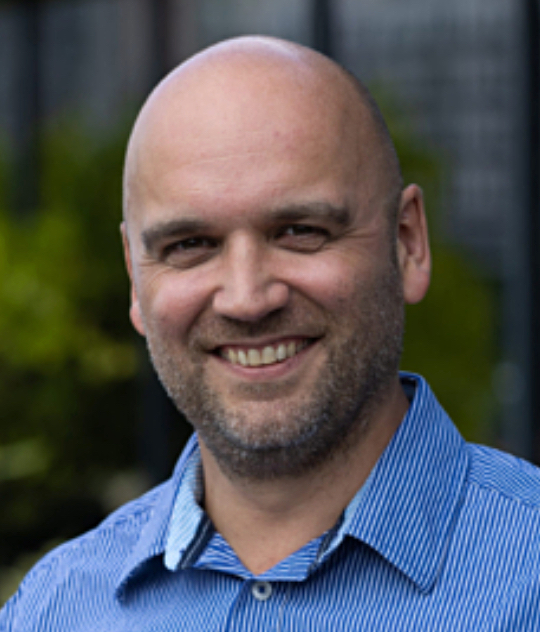When an optical cable terminates at a switch, its photons are transformed into electrons and digital circuitry receives and processes the light signals. How much faster things would be if you stayed with photons, like at the speed of light. In fact, you could develop an optical packet switch faster than an electrical packet switch and using less electricity.

That was the realization of Michael Pearcey, the CTO of UK startup Finchetto, when he was locked down at home during the Covid pandemic. He had developed an algorithm to run a processor’s ALU (Arithmetic Logic Unit) optically and reckoned it could be used to help develop optical processing functions. He and his co-founder at Finchetto, CEO Mark Rushworth, thought the concept could fly, and set about developing it with a view to productization.
We’ll examine this in a pair of articles, with this first part looking at the basics, and the second part getting into the details.
Rushworth gave me an introduction to Finchetto and the session started with me asking one of those silly questions: “Do electrons travel through a cable at the speed of light?”
The answer is no, they don’t travel along the cable at all, but an electromagnetic wave front does, propagating though the solid material of the conducting cable. It travels along the cable, which acts as a waveguide, at 50 to 99 percent of light speed in a vacuum, depending upon the cable material. Light speed is ~186,282 miles per second in a vacuum. A twisted pair copper Ethernet cable exhibits an electrical signal speed of 65 – 75 percent of light speed; ~130,400 miles per second at 70 percent. The signal will then take 0.52 microseconds to pass along 100 meters of such a cable. Light would take about 0.33 microseconds to cover a 100 meter distance in a vacuum and about 0.48 microseconds to travel along a 100 meter optical cable.
However, the Ethernet cable data rate is different and varies with encoding, bandwidth and other factors, and can be 1 Gbps (1GbE), 10Gb and so on.
Anyway, a light-carried data signal loses about 25 to 35 percent of its speed when it crosses the photon to electron boundary.
There’s another difference between light and electricity. A completed circuit is needed for electricity to flow around it. Light does not need a circuit. It can work in a vacuum or travel along a carrier that’s transparent, like an optical cable, with Rushworth saying: “It’s energy that’s propagating into an area.” In that sense, an electrical cable is an active carrier of a signal while an optical cable is passive, with Rushworth summing things up: ”What that means is that, in order for an electrical circuit to work, you have to complete it. In order for a photonic circuit to work, all you’re doing is directing it.” Directing, guiding, the light.

He said: ”What that means from a data comms perspective is that you can communicate data far, far faster in light than you can in electricity. And that is why you’ve got fiber optic cables and the telecommunications networks because they wanted that speed increase.”
A third basic point is that it requires a certain level of energy to get an electromagnetic wave propagating along an Ethernet cable. It takes much less energy to send a light signal the same distance. Photonics can save energy and improve data transmission performance compared to electricity. Rushworth defines photonics as: “the engineering field of light generation, light manipulation and light detection.” We can envisage lasers generating it, waveguides directing it, and photo detectors identifying it.
Photonics is particularly useful for getting the light signals closer in to the electronics involved in computing. An optical cable will currently plug into a transceiver on a network interface card (NIC). The transceiver is responsible for converting the data from the optical domain to the electronic domain and vice versa.
Finchetto is going much further than this. Rushworth said: “What we’re doing is, we’re actually building an optical switch. So more than an interconnect; we’re creating a network.”
At the moment, such switches, like Cisco ones, are electrical and can act as a bridge, an electrical domain island, between incoming and outgoing sets of optical cables. Finchetto wants to make an optical switch, a fully-optical, passive network switch, with no need for time-consuming and energy-using conversion to/from the light domain to the electrical domain.
The switch will use an integrated photonic chip. Such a chip will have wave guides etched on it, which are the rough equivalent, at an extremely small scale, of an optical cable.
Rushworth said: ”We are eliminating the electronics from the switch. So you don’t get that conversion. And that then comes back to the power and performance. You reduce the power consumption of the overall network and you improve the performance. So the latency of the data through the network [gets reduced].”
The Finchetto switch will have a port-to-port latency of 40 nanoseconds, up to 50x lower than fast electrical switches. It will draw only 38 watts, representing a 26x to 53x reduction in power compared to electrical switches.
We’ll dive deeper in how it does this, and where it could take us in part 2 of this look at Finchetto and its technology.








